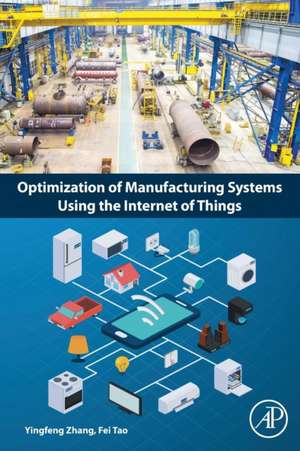Optimization of Manufacturing Systems Using the Internet of Things
Autor Yingfeng Zhang, Fei Taoen Limba Engleză Paperback – 20 oct 2016
As modern manufacturing shop-floors can create bottlenecks in the capturing and collection of real-time field information, and because paper-based manual systems are time-consuming and prone to errors, this book helps readers understand how to alleviate these issues, assisting them in their decision-making on shop-floors.
- Includes case studies in implementing IoTs for data acquisition, monitoring, and assembly in manufacturing.
- Helps manufacturers to tackle the growing complexities and uncertainties of manufacturing systems in globalized business environments
- Acts as an introduction to using IoT for readers across industrial and manufacturing engineering
Preț: 596.80 lei
Preț vechi: 745.99 lei
-20% Nou
Puncte Express: 895
Preț estimativ în valută:
114.27€ • 117.21$ • 96.21£
114.27€ • 117.21$ • 96.21£
Carte tipărită la comandă
Livrare economică 19 februarie-05 martie
Preluare comenzi: 021 569.72.76
Specificații
ISBN-13: 9780128099100
ISBN-10: 0128099100
Pagini: 226
Dimensiuni: 152 x 229 x 15 mm
Greutate: 0.34 kg
Editura: ELSEVIER SCIENCE
ISBN-10: 0128099100
Pagini: 226
Dimensiuni: 152 x 229 x 15 mm
Greutate: 0.34 kg
Editura: ELSEVIER SCIENCE
Cuprins
1. Introduction2. Overview of IoMT3. Real-time and multi-source manufacturing information perception4. IoT-enabled smart assembly station5. Cloud computing based manufacturing resources configuration method6. Real-time information-driven production-scheduling system7. IoT-enabled smart material handling8. Real-time key production performances monitor method9. IoMTprototype system10. Conclusions and future works
